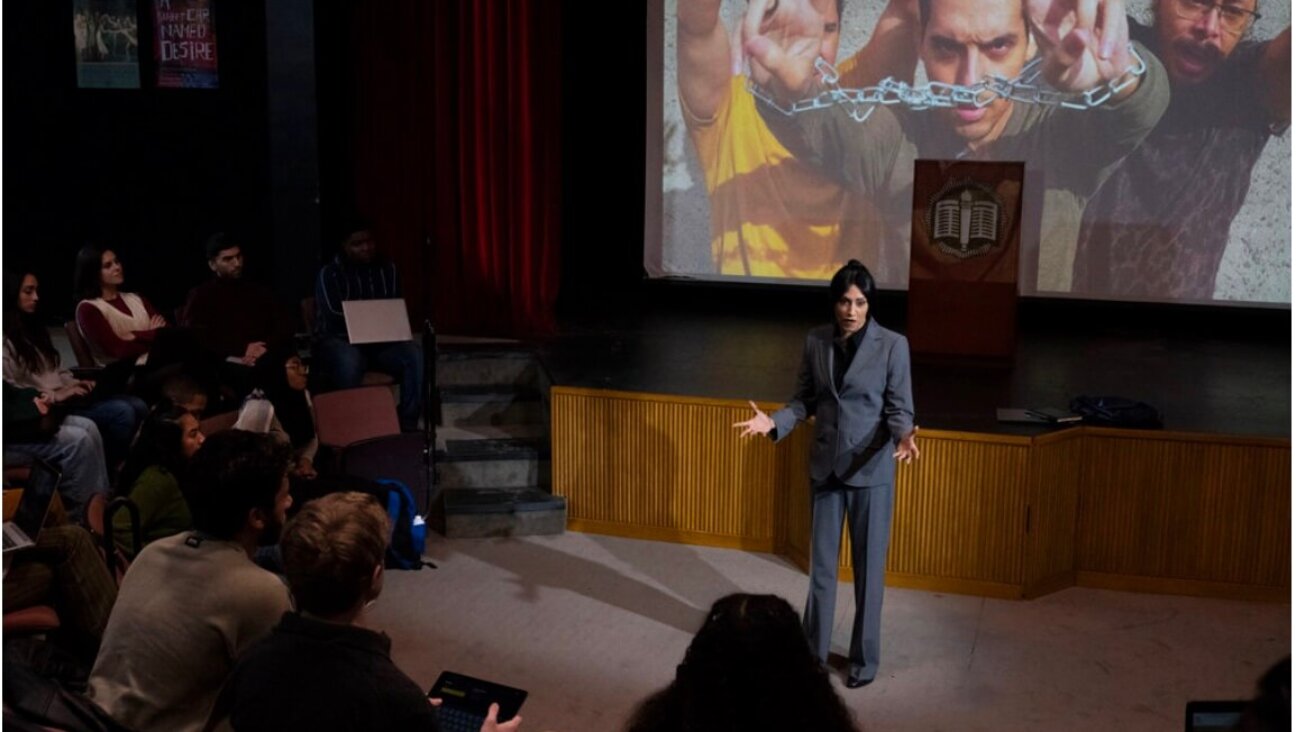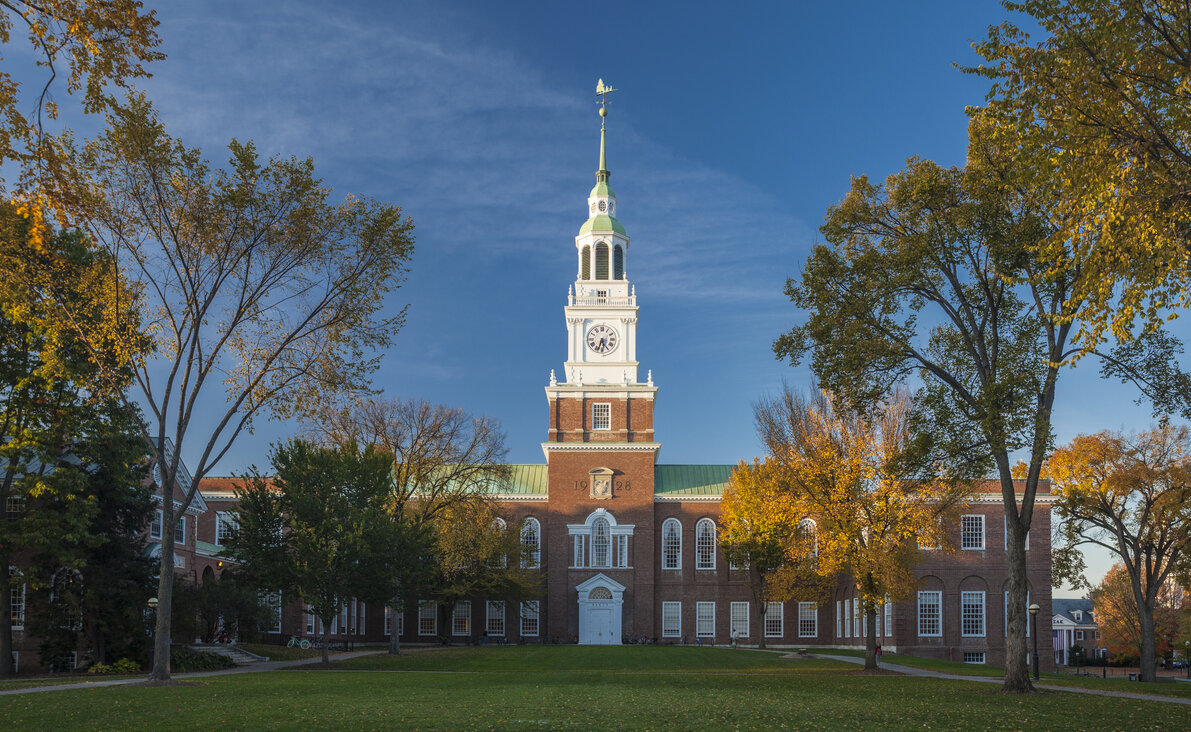A Rude Awakening in Indiana’s Marshmallow Country

Northern Cardinal, State Bird of Indiana Image by Kurt Hoffman
This past Labor Day weekend we celebrated the 125th anniversary of a synagogue to the sounds of AC/DC, rumbling Harleys, and the Blake Shelton song, “Kiss My Country Ass.” The synagogue was none other than Ahavath Sholom, built in Ligonier in Noble County, Indiana in 1889, and the music, well, it was part of Ligonier’s 22nd annual Marshmallow Festival going on nearby. For over 50 years, Ligonier was home to Kidd Marshmallow factory, which in a single week produced 20,000 cases of kosher marshmallows each February before being sold in 1996.
German Jews arrived in Ligonier in the 1850s as peddlers and quickly built up the downtown with dry goods shops, banks, real estate businesses, and even buggy and pump organ factories. Ligonier’s Reform Jews held Sabbath and holiday services in the homes of prominent Jewish community members such as Solomon Mier and Jacob Straus. By the 1860s, the Jewish community grew to merit a small wooden synagogue and a cemetery. By the late 1800s, the Jewish community made up half of the business owners in town and 15% of the population numbering around 1,500. Many served as mayors and councilmen. In September 1889, the community built and dedicated the 1,430-square-foot Ahavath Sholom synagogue at 503 S. Main St. at the cost of $15,000.
I was born in 1979 on a farm in Noble County about 15 miles away from Ahavath Sholom; the closest Jewish community is over 40 miles away in Fort Wayne. Noble County is pretty much the same now as it was then. According to the 2010 census, there were 47,536 people living in this mostly farming county; 97% of the population is white. To this day, my parents still live on the farm-turned-vineyard where I grew up, and I would never trade my childhood for any cramped urban or sterile suburban upbringing.
But I had never heard about the Ahavath Sholom synagogue until I received a phone call from John Bry, who was the director of the Noble County Convention and Visitors Bureau, about five years ago. Word had somehow gotten out in the small community that a Noble County native had lived in Israel for a few years, received a master’s in museum studies at George Washington University and just finished another master’s in Jewish history at Brandeis. I received the call in Columbus, Ohio, where I now live.
“We’re thinking of painting a Jewish mural on the side of the synagogue,” Bry said, “and we need your help to determine what to paint.” My heart sank. Not only was I just now finding out about a historic synagogue so close to my childhood home, but it was going to be painted before I even laid eyes on it. Ligonier, like many other towns in the Midwest, had decided to boost tourism in the area by commissioning murals on the sides of old buildings depicting the history of the area. Luckily, the “Jewish mural” never came to fruition but it was nonetheless my introduction to the building.
The first time I actually saw the synagogue, it was decorated with red bows and an evergreen garland for Christmas. My mother and I had signed up for the 2009 historic walking tour of Ligonier and Ahavath Sholom was one of the stops. As soon as I stepped inside, my love affair with the building began. The sanctuary was covered, wall-to-ceiling, with stuff. The Ligonier Historical Society had used every square inch of the sanctuary to hang and display their entire collection of objects. But through the “grandma’s attic” atmosphere, I was blown away by the vibrant stained glass windows on the north, south and west sides of the sanctuary and awestruck by the wooden Aron Kodesh on the east side.
The red brick Victorian Gothic revival building boasts stained glass windows depicting three scenes of King David’s life, an ornately carved wooden Torah cabinet that protrudes out the back of the building in brick, and the original brass and opalescent glass lighting fixtures throughout. According to an article in the September 12, 1889, Ligonier Banner, the synagogue dedication was quite a celebration. Members carried the Torah scrolls from the old wooden synagogue down the street to the tunes of the Ligonier Military Band, and with “uncovered heads,” read a poem at the front steps that referenced peace, brotherhood, doing away with prejudices and fanaticism, and ended with this stanza:
Generations will come — generations go. This temple still be here,
A monument for the Israelites, An ornament for Ligonier.
Rabbi Isaac Mayer Wise made the trip to Ligonier from Cincinnati to speak at the dedication. “I am proud that I am an American citizen,” Wise declared, “and that our broad land is dotted from ocean to ocean with places of worship protected by the strong arm of religious tolerance and soulful devotion.” Following the dedication were Sabbath services, a banquet complete with numerous toasts and a grand ball with “beautiful and expensive costumes.”
When Ligonier’s Jews began to relocate to larger Jewish communities in the 1950s, they took the Torah scrolls with them, gave the sanctuary lamp to a Jewish community in Elgin, Illinois, and sold the synagogue to a Methodist church. Later, the building became a First Christian church, then a Lutheran church, and finally, an Assembly of God. Thirty years ago, The New York Times published a retrospective piece on the town’s Jewish history, in which it called Ligonier “a little no where town” and a “backwoods” before the Jewish immigrants arrived there. In 1985, the Ligonier Public Library purchased the building; the Ligonier Historical Society has used it as a local museum ever since. The building, on its 100th anniversary in 1989, was placed on the National Register of Historic Places.
There is something about an old synagogue, even one that no longer has a congregation, which allows the presence of the historical congregation to still be felt. Maybe it’s the squeaky floor, sloped ever so slightly so one could see the bimah over the congregants’ heads. Maybe it has something to do with the acoustic properties of the sanctuary that make even the most out-of-tune voice sound magical. Or maybe it’s the Hebrew lettering and the Jewish iconography, which root visitors to a common past. But whenever I go into this one-room building, I am transported back in time to when Ligonier’s Jewish community worshipped there, and I find myself at home.
When I decided that I wanted to work to save and restore this sacred space, I began reintroducing myself to the citizens of Noble County to gain the trust of the current caretakers of the synagogue. By the spring of 2014, I had led a team of volunteers from the Ligonier Historical Society through cataloging over 900 objects in their collection and sorting paper and photographs into almost 50 archival boxes.
But I was in for a rude awakening. In 2013, I had contacted all four of the Indiana Jewish Federations and asked for $500 to support my application for an Indiana Historical marker for Ahavath Sholom to celebrate its 125th anniversary. The Federations donated the $2,000 needed for the marker. No sooner had I completed the research and work to write the text for the marker, the Ligonier Public Library announced its plan to sell the building for $50,000. My grand plan to dedicate the marker and kickoff a fundraiser to restore the slate roof and the brickwork and to preserve the stained glass windows suddenly no longer made sense. Who would end up purchasing this synagogue and what would become of it?
My years of volunteer work had only gone to clean up the building to prepare for its ultimate sale.
But at least I still had a historic marker on the way. The diligent team of volunteers and I put together a 125th birthday party for the building, complete with a blue and white birthday cake. Even with this sweetness, the dedication of the marker was bittersweet. Vanloads of Jews made the trip to Ligonier from Fort Wayne but only a handful of Noble County residents could be torn away from the Marshmallow Festival to celebrate with us.
I felt alone and remembered the words of Joseph Levine, past director of the Indiana Jewish Historical Society, in that 1984 New York Times article: “Today, there are 180 Jews in the Ligonier cemetery and nothing but goyim living in town.” What will happen to the “ornament” of Ligonier is yet to be determined. But what I do know is if they decide to tear the synagogue down, they first will have to rip out that giant cast-aluminum historical marker out front.
Wendy Soltz will finish her Ph.D. in Modern Jewish History and Public History at Ohio State University in August 2015. Born in Indiana, she now lives in Columbus, Ohio and teaches at OSU and Purdue University.

I hope you appreciated this article. Before you go, I’d like to ask you to please support the Forward’s award-winning, nonprofit journalism during this critical time.
Now more than ever, American Jews need independent news they can trust, with reporting driven by truth, not ideology. We serve you, not any ideological agenda.
At a time when other newsrooms are closing or cutting back, the Forward has removed its paywall and invested additional resources to report on the ground from Israel and around the U.S. on the impact of the war, rising antisemitism and the protests on college campuses.
Readers like you make it all possible. Support our work by becoming a Forward Member and connect with our journalism and your community.
Make a gift of any size and become a Forward member today. You’ll support our mission to tell the American Jewish story fully and fairly.
— Rachel Fishman Feddersen, Publisher and CEO
Join our mission to tell the Jewish story fully and fairly.
























